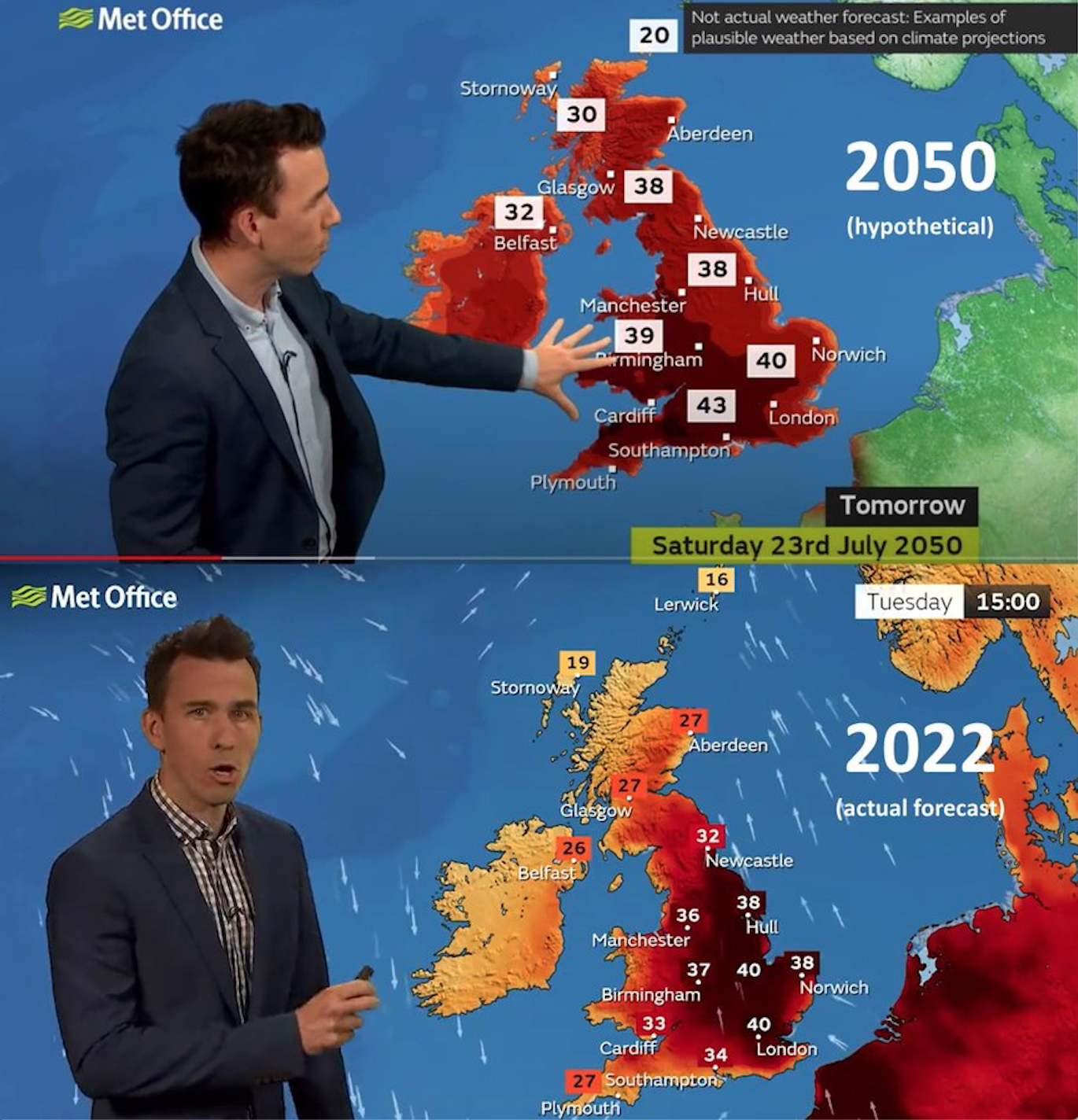While the "heat apocalypse" that is baking much of Europe may seem like just more of the same extreme weather we've been experiencing globally for years now, it seems to me that we've now reached a new level of disruption, with significant implications for insurers.
Like prior heat waves, this is one is exacerbating wildfires, destroying homes and other buildings, causing mass evacuations and generally upending millions of lives. The "heat apocalypse," as it's being labeled in France, is causing stress that is killing people -- hundreds just in Spain last week -- and overloading hospitals. But, as awful as all that is, insurers have been adjusting, and the public has become inured.
The new news here, it seems to me, is all the downstream disruption -- the business closings, the cancellation of flights and trains, etc. that will produce a flurry of claims for insurers and that will only get worse as global warming continues.
Although most of the climate change debate seems to focus on just how much temperatures will rise by 2035 or 2050 and just how destructive that increase will be, major effects have begun happening here and now -- and insurers are on the hook.
In England, temperatures of 104 degrees Fahrenheit are expected this week. That may not sound unbearable to Floridians, Texans or those of us who live in California's Central Valley, but the average daytime high in London in July is 70F. When I lived in Brussels, where the climate is very similar to London's, we once went straight from a rainy spring to a rainy fall, with only one clear, reasonably hot day in between -- and that was a Thursday, so I was in the office and missed summer that year.
English homes are built to retain heat, not cold air. Fewer than 5% of English homes have air-conditioning. The transportation infrastructure is tuned for a mild climate, too, so the heat is hitting hard.
Luton Airport, near London, had to close for repairs because the runways were melting. The Royal Air Force closed two airports for the same reason. Municipalities spread sand on roads because the asphalt was getting sticky and endangering drivers. Rail transit shut down because of fears that the metal rails would buckle -- electrified commuter trains had additional problems because stress on the grid meant that their power lines were unreliable.
With millions of people unable to get around, businesses closed across the British Isles.
All the other problems associated with extreme weather are, of course, still happening, too. Temperatures in Spain and Portugal hit 117F last week, and there are wildfires in those countries, as well as France, doing massive damage to property and forcing evacuations.
"In rural areas," the Washington Post reports, "heat waves are expected to have an increasingly serious impact on agricultural production. This year, French farmers faced a mix of frost, a record-hot May accompanied by a spring drought, and intense hailstorms that brought heavy rain, followed by more drought this summer.
“'The drought in much of Europe is critical,' the European Commission’s research branch concluded in a report released Monday, which warned that 'a staggering portion of Europe' — about half of European Union and British territory — is now at risk of drought."
Drought, wildfires, tornadoes, hurricanes, derechos and other forms of extreme weather will continue to generate the vast majority of claims for insurers, but the lesson for me from the "heat apocalypse" in Europe is that lots of claims for travel and business disruption and perhaps for auto accidents are already hitting insurers, too.
So, even if you don't think of yourself as being in the business of insuring against extreme weather, you may be.
And the exposure will only grow as climate change worsens. Look at the images below. The top image is from two years ago. It was a hypothetical example of a weather forecast from 2050 that would show how extreme the temperatures could get in England. (For those of us not conversant in Celsius, 40C is 104F.) The bottom image is an actual forecast from the past week. They're eerily similar.
Now think how hot 2050 could actually be. Or 2025, for that matter.

Cheers,
Paul


